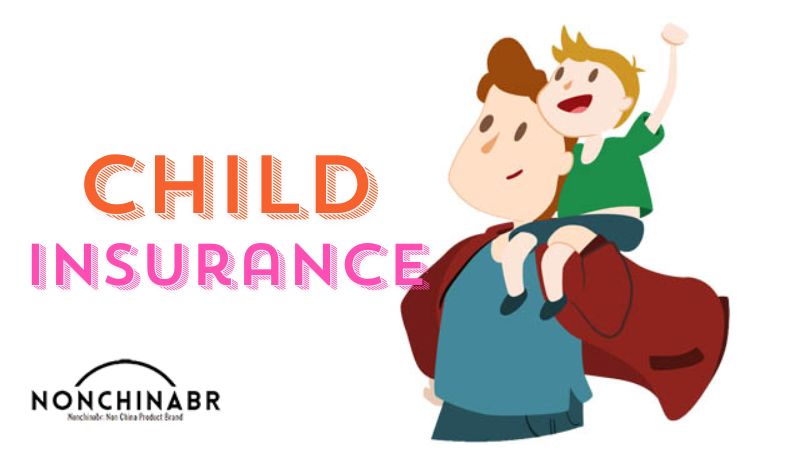A Comprehensive Guide to Life Insurance Policies for Children

In today’s uncertain world, ensuring the financial security of our loved ones is paramount. While life insurance is often associated with adults, there’s a lesser-known avenue worth exploring: life insurance policies for children. These specialized policies offer a unique way to safeguard your child’s future and provide peace of mind for you as a parent.
Life insurance policies for children, also known as juvenile life insurance, serve a dual purpose. They offer financial protection in the event of the unthinkable, while also providing a long-term investment vehicle that can help secure your child’s financial future. Let’s delve deeper with Nonchinabr into this often-overlooked aspect of financial planning.
Understanding Child Insurance
Life insurance policies for children come in various forms, with the most common being term life, whole life, and universal life insurance. Each type offers its own set of benefits and features, allowing parents to tailor their coverage to suit their specific needs.

- Term Life Insurance for Children: Term life insurance provides coverage for a specified period, typically 10, 20, or 30 years. If the child passes away during the term, the policy pays out a death benefit to the designated beneficiary. While term life insurance for children is less common than other types, it can still provide essential coverage during the child’s formative years.
- Whole Life Insurance for Children: Whole life insurance offers lifelong coverage, as long as premiums are paid. In addition to the death benefit, whole life policies also accumulate cash value over time. This cash value grows tax-deferred and can be accessed through loans or withdrawals, providing a valuable financial resource for the child in the future.
- Universal Life Insurance for Children: Universal life insurance combines the lifelong coverage of whole life with greater flexibility in premium payments and death benefit amounts. These policies also accrue cash value, offering a potential source of funds for future needs such as college tuition or a down payment on a home.
Reasons to Consider Life Insurance Policies for Children

- Final Expense Coverage: Perhaps the most significant benefit of child life insurance is the financial protection it provides in the event of the child’s death. No parent wants to contemplate such a tragedy, but having life insurance in place can help cover funeral and burial expenses, relieving the financial burden on the family during an already difficult time.
- Future Insurability: Purchasing life insurance for a child at a young age locks in their insurability, regardless of any future health issues they may encounter. This can be especially valuable if the child develops a medical condition later in life that would otherwise make obtaining coverage difficult or costly.
- Cash Value Accumulation: Whole life and universal life insurance policies for children offer the added benefit of cash value accumulation. Over time, the cash value grows tax-deferred, providing a valuable asset that can be used for a variety of purposes. Whether it’s funding education expenses, starting a business, or purchasing a home, the cash value of a life insurance policy can serve as a valuable financial resource for the child later in life.
- Legacy Planning: Some parents choose to purchase life insurance for their children as a way to leave a financial legacy. By investing in a policy early on, parents can ensure that their child will receive a substantial sum of money upon their passing, providing a valuable financial cushion for future generations.
Important Considerations
- Cost: While life insurance premiums for children are typically lower than those for adults, they can still vary significantly depending on factors such as the child’s age, health status, and the type of policy selected. It’s essential to shop around and compare quotes from multiple insurers to find the best coverage at a price that fits your budget.
- Coverage Amount: When determining the appropriate coverage amount for your child, consider factors such as funeral expenses, outstanding debts, and potential future financial needs. While it’s tempting to purchase the maximum amount of coverage available, be mindful of your budget and only buy what you can afford.
- Cash Value Growth: If you opt for a whole life or universal life insurance policy, it’s essential to understand how the cash value grows over time. Be sure to review the policy’s surrender charges, fees, and potential loan interest rates to ensure that you’re making an informed decision.

- Comparison Shopping: Don’t settle for the first life insurance policy you come across. Take the time to research and compare quotes from multiple insurers to find the best coverage at the most competitive price. Working with an experienced insurance agent can also help you navigate the complexities of child life insurance and find a policy that meets your needs.
- Rider Options: Some insurers offer additional riders that can enhance the coverage provided by a child life insurance policy. Consider options such as a waiver of premium rider, which waives future premiums in the event of the policyholder’s disability or critical illness, providing added peace of mind for you as a parent.
- Regular Review and Update: Life insurance needs can change over time, so it’s essential to review your child’s policy regularly to ensure that it still meets your needs. Whether it’s adjusting coverage amounts, updating beneficiaries, or exploring additional riders, staying proactive about your child’s life insurance coverage can help ensure that they’re adequately protected.
Sum Up
In conclusion, life insurance policies for children offer a valuable opportunity to secure your child’s financial future while providing essential protection in the event of the unexpected. By understanding the various types of policies available, weighing the benefits and considerations, and shopping around for the best coverage, you can take proactive steps to safeguard your child’s future and provide peace of mind for you as a parent.




